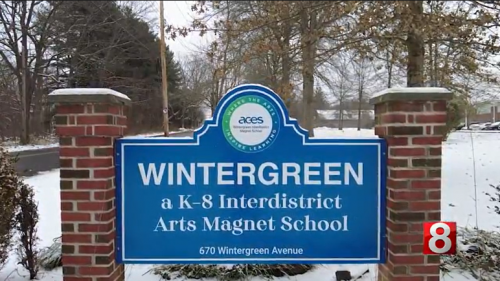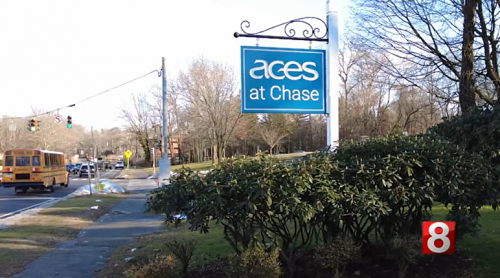-
Our Agency
- About Us
- Calendars
- Contact Us
-
Directions
- ACCESS
- ACES at Chase
- ACES International Preschool and Childcare Center
- ACES Transportation Services
- Center for Autism Spectrum and Developmental Disorders
- Central Office
- Educational Center for the Arts
- Educational Technology
- Little Theatre on Lincoln Street
- Mill Road School
- Network Services
- Staff Development / Administration
- Village School
- Whitney High School North
- Wintergreen Interdistrict Magnet School
- Human Capital Development
- Education Foundation
- News / Press
- Publications
- Request for Proposals
- Employment
- Events & Workshops
-
Schools & Programs
-
Special Education Schools
- Center for Autism Spectrum and Developmental Disorders
- Mead Elementary School
- Mill Road School
- Village School
- Whitney Academy EXPLORE & CREATE
- Whitney High School North
-
Magnet Schools
-
ACES at Chase
- About Us
- ACES at Chase: History & Origins
- Admissions
-
Student and Family Portal
- Breakfast and Lunch Menus
- Cancellations, Delays, and Early Dismissal
- Community Health Center
- Dress Guidelines
- Grading and School Policies
- Health Office
- Principal's Corner
- Quick Links
- School Newspaper: Chase Express
- Student Handbook
- Technology & Digital Citizenship
- Virtual Suggestion Box
- Document Library
- Contact Us
- Back to ACES
- Educational Center for the Arts
- Wintergreen Interdistrict Magnet School
-
ACES at Chase
- Alternative Education
- ACES Early Head Start
- ACES International
- ACES Open Choice
- ACES International Preschool and Childcare Center
- Family and Community Engagement
- Magnet School Parent Choice
- School-Based Services
-
Special Education Schools
-
Services
- ACCESS Adult Vocational Services
- ACES Insurance Collaborative
- ACES UP
- Alternate Routes to Certification
- Autism Programs
- Business Partnership Opportunities
- Clinical Services
- Educational Technology
- Facility Rental
- Fingerprinting
- International Programming
- Marketing and Communications Services
- Professional Learning
- Regional Education Councils
- Regional Special Education Transportation
- Security Services
- Speech and Language Services
- Technology
- Translation Services
- Transportation
- Find
« Back to News List
« Back to News List
Small Wonder The 90-Year-Old Little Theatre is Miraculously Resurrected
June 27th, 2014
When the "Little Theatre on Lincoln Street" first opened for business in 1924, Calvin Coolidge was president, Babe Ruth slugged 46 home runs in almost brand-new (it had opened the year before) Yankee Stadium - which would become known as the "House That Ruth Built." The most popular "moving picture" of the year was the swashbuckler The Sea Hawk. It was just that - a moving picture - as it did not have a soundtrack. That technology was still three years into the future, with the release of The Jazz Singer starring Al Jolson.
Ninety years ago, the Little Theatre (as it came to be known) was constructed as part of the "little theater movement," a national trend emphasizing smaller community spaces for live performance in contrast to glitzy performance palaces hosting spectacles of drama, cinema, dance and music.
Throughout its long life the Little Theatre served as a venue for live theatrical and music performances as well as beloved art-film cinemathique. On June 6, the space was formally reopened to the public by Area Cooperative Educational Services (ACES), which acquired the theatre in 1986.
ACES performed what renovations it could for use as an educational space, but that mission was constrained both by dearth of physical space and out-of-date technology. So in 2010, fueled by a state construction grant, ACES engaged Elm City architects Svigals+Partners to undertake a comprehensive renovation that eventually would cost about $9 million.
"The renovation needed to serve multiple goals at once, in a very small space," explained ACES Executive Director Craig W. Edmondson. "The theatre required additional support spaces and modern infrastruture, and had to function more appropriately for the school."
Thus the newly restored venue will serve two functions: as "cutting-edge" theater venue, as well as a performing-arts teaching facility.
The renovation was captained by Julia McFadden, AIA associate principal with Svigals+Partners. "The renovation needed to serve multiple goals at once, in a very small space," she explains. "The theater required additional support spaces and modern infrastructure, and had to function more appropriately for the school.
"It was also crucial to preserve as much as possible of the theater's historic legacy," she adds. "Though the structure was not architecturally significant, its importance to New Haven and the city's arts community required that the renovation include preservation as a guideline."
Construction included razing an older addition in order to build a new one, adding 2,000 square feet to the theater's original 9,000-square-foot footprint. The existing foundation walls were replaced, although the renovation plan retained the 16-inch-thick steel-reinforced concrete walls and the steel truss roof with timber decking.
In the theater's interior, history takes a back seat to contemporary design and the latest theater craft. The structure has undergone considerable structural alterations and has been outfitted with new electrical infrastructure. The original sloping floor of the audience area was replaced with a new partial basement allowing for the installation of a spring-loaded mechanical floor. In the "down" position the floor is the appropriate height for mounting modular audience seating for performances. When school is in session the floor is moved to the "up" position level with the stage, creating a large uninterrupted space to accommodate acting, dance and movement-based activities.
The renovation also involved designing and building new flylofts, rigging, lighting systems and an acoustic divider that allows for two simultaneous performances or rehearsals.
"This is a serious new venue and a major boon for the students of the magnet school, as well as for the community at large," explains McFadden.
Speaking at the June 6 ribbon-cutting fete, New Haven Mayor Toni N. Harp called the space 'an iconic figure of New Haven's cultural landscape." She added, "Welcome back to the neighborhood, Little Theatre,"
To read more, click on the link below:













